Few, and carefully considered, and he broadcasts them like a beacon in every weather.
Martin Seay (of the Ke$ha essay linked above for the next little while) has written other things, of course; of course he has: he has a blog! —Today I read this longer piece on Norman Rockwell (and Spielberg, and Lucas, and a whole host of somethings else), and if you have a few minutes cleared at some point or other in the next little while, I urge you to do likewise.

You can add up the parts;
you won’t have the sum.
So you can anyway imagine the grin on my face when I tripped over Mendlesohn’s Corollary to Clarke’s Third Law:
Any sufficiently immersive fantasy is indistinguishable from science fiction.
Problem being she’s talking about immersive fantasy, and she classes or tends to class urban fantasy, the thing we’re pointing to, as intrusion.
—I’m gonna have to get into this, aren’t I.
Farah Mendlesohn sat down to grapple with the rhetorics of fantasy; she stood up with a taxonomy for organizing all of fantastic fiction, every last drop of it, based on the narrative strategies, the rhetorics used to establish the relationship between the normal, the disputable here of us, and the numinous, the ineluctable there beyond the fields we know—a sound basis for a system of describing (and not prescribing) fantasy as she is wrote, you’ll agree. (—What else is there?) —Her taxonomy, then, proposes four means whereby this relationship is inscribed, interrogated, upended and maintained:
- the portal/quest, in which we go from here to there;
- the immersive, in which there is no here but there;
- the intrusive, in which there comes here and must return;
- the liminal, in which there was here all along.
So. Four. (With yes an implied fifth, and an obvious sixth. —But for now, four.) —Why only four? Why these four? —Well.
A while back I found myself idly toying with ways to structure and organize sexual imagery, energy, symbols and roles, flows of power and expectation, something a step or two beyond the brutally stupid dichotomy we’re mostly stuck with, the masculine, the feminine, which all too often boils down to the merely phallic. —Why, even Freud, who thought long and hard about this sort of thing, once said,
if we were able to give a more definite connotation to the concepts of “masculine” and “feminine,” it would even be possible to maintain that libido is invariably and necessarily of a masculine nature, whether it occurs in men or in women and irrespectively of whether its object is a man or a woman.
And not all the handwaving footnotes in the world can keep me, even here in the comfortable lap of 21st century cisgendered heteronormative privilege, from calling that out as the most specious of bullshit, a definition desperately trying to maintain the worldview in which it’s relevant. —Nonetheless, he did, and it did, and look where it’s all gotten us: bros before hos, amirite?
Anyway. At about the same time I was re-reading Red Mars, and so once again got caught in the seductive grip of the Greimas semantic square:
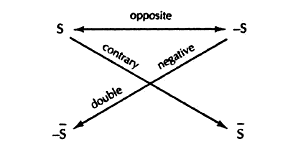
Proposition S; the opposite of S; the negation of S; the negation of the opposite of S. No simple dichotomy, this! (And it’s just the first stage.) —What I ended up with, then, looked something like:
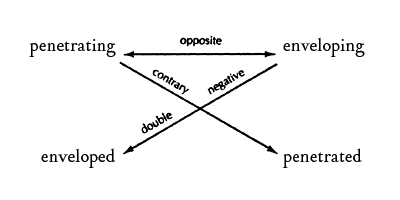
I tried to go with terms at once as suggestive and yet sex- (and gender-) inspecific as possible—wait, you’re saying, the four, what on earth does all this—with the penetrating, and the enveloping, I mean, any of us, male, female, straight or gay or polymorphously whichever, cis or trans or not at all partaking, any of us—fantasy, you’re saying, urban fantasy, what does this have to do with—we can all identify with penetrating, or enveloping (I almost went with swallowing, but that’s a bit too too, you know?), with being enveloped, with being penetrated; we can all see them as valid stances, as desires, as starting points each as proper as the other, right? —Seriously, you’re saying, what does this have to do with the urban fantasy as sf and that taxonomy you were, and I’m saying patience, watch, count it off, do the math, look at them over there, they figured it out—
It’s a trifle, is what it is, a toy. I mean, I trust it demonstrates how easily the brutally stupid dichotomy can be disrupted, but Christ, anyone who thinks about it half a moment can see that. —And yet it keeps coming back, doesn’t it? Men do this. Women want that. Way of the fucking world. —I mean look where little ol’ cisgendered mostly heteronormative masculine me put the penetrative end of things, huh? Proposition S. Look how everything else gets othered by that placement, with all the opposing and the negating. —“The power involved in desire is so great,” says Delany, responding to (among other things) that Freud quote above,
that when caught in an actual rhetorical manifestation of desire—a particular sex act, say—it is sometimes all but impossible to untangle the complex webs of power that shoot through it from various directions, the power relations that are the act and that constitute it.

Sex and sexuality, desire and power, it’s all too terribly complicated for simple logical constructs to contain. The models are all wrong and useless. You start to feel like Two-Face in the Grant Morrison – Dave McKean Arkham Asylum, weaned by well-meaning psychotherapists from the binary limitations of his ghastly decisive coin to the six-fold options of a die, multiplying the ramifications of every choice he makes up to the paralyzing forest of possibilities in a decision-making system based on the fall of a pack of Tarot cards—he pisses himself, unable to decide which way to turn. No wonder the brutally stupid dichotomy keeps coming back! It’s wrong, but at least it gets things done!
But: if we replace the sex with rhetoric—
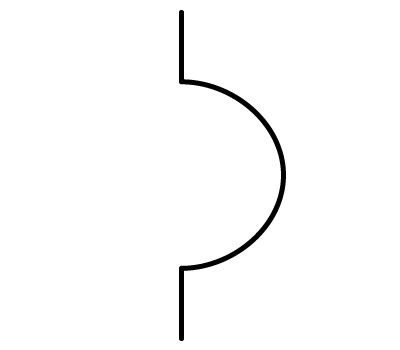
Two sides, normal and numinous, here and there; the membrane between them (for how else could we tell the two sides apart, or that there were two at all? —Remember: the rhetorics each in their own way inscribe and maintain the relationship between the two, which depends upon that difference); the crack within the membrane (for how else could the light get in? how else would it all be storyable?)—just adjust which is where as you go and oh do let’s be blunt about it: we (along with the protagonist) set out from the normal through a portal on a quest to penetrate the numinous; we (along with the protagonist) are utterly immersed in the numinous as it envelops us; we (along with the protagonist) are intruded upon by the numinous as it penetrates our normal world; we (along with the protagonist) find the numinous enveloped within us, a tremulous limen within our grasp. —Take the portal/quest, the ur-fantasy for most of us, and set it in the role of proposition S; the rest, oppositions and negations, fall neatly into place.
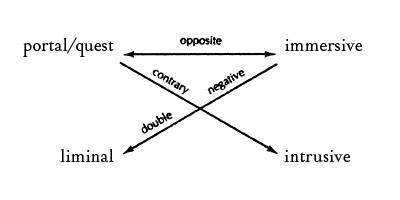
Now one of the reasons I like arranging Mendlesohn’s taxonomy this way is it helps to visualize the pitiless logic of here and there that underlies it all (oh, but be careful! Such logic is seductive, and narcissistic: in love with itself it ignores anything that isn’t, and always risks turning brutal and stupid. There is an implied fifth, of course: everything else. And also the obvious sixth: none at all. But for now let’s stay in the square). But also: there’s the rhetorics primarily associated with each type:
- the portal/quest, as previously discussed, depends upon the didactic to tell the world as it is to its protagonist, and us;
- the immersive plays with ironic mimesis, its po-faced protagonist taking for granted things we’d find most extraordinary;
- the intrusive pushes and pulls its protagonist (and us), depending on latency (for irruptions must always prove short sharp shocks);
- the liminal eschews its protagonist and reaches up to us direct, through the dialectic between the reader and the work.
Take these, hang them about the square, and lift it all up to the next stage (I did warn you that the square was but the first move we could make):
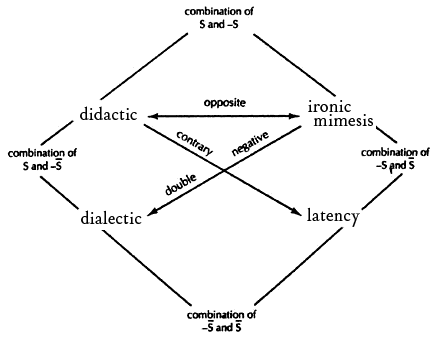
And we start to see some of the moves hinted at in the taxonomy, the ways the sets can fuzz, and not: that the didactic of the portal/quest can shade to ironic mimesis, as its protagonist learns the ways of the world, and can reach even for an archly knowing dialectic with the reader, but can’t except in the very opening pages do much with latency—there is a door and we will go through it in this scheme of things. Why wait? —That the ironic mimesis of the immersive can always go didactic to drop some (forgive the term) science on us, or play with the latency of the wonders it cannot admit it delivers, but can never reach for that dialectic which breaks the seals between its there and our here, threatening the illusion of immersion. —That the latency of intrusion can use both ironic mimesis and a knowing dialectic in its arsenal of pushes and pulls, but can never come right out and and say what’s happening, flatly, and expect to pull it off. —That the liminal can use—must use—both latency and the didactic to keep us at once engaged and at bay, but would (ironically) find ironic mimesis too open and direct an admission of the wonders it’s always on the edge of revealing.
As, I mean, a for instance. Don’t take my word for it. I’m just fucking around at this point. —Christ, I haven’t even gotten into how this all does and doesn’t work with the Cluthian triskelion. —Mostly what I need for you to understand before we take our next step is this: that Mendlesohn sees the immersive school as having the most in common with the “closed” worlds of SF, which is what her corollary means, and why my grin’s provisional at best; that she classes urban fantasy as intrusion, as stories of push-me–pull-you latency, and thus not SF at all, at least not in that sense.
But—
As Mendlesohn herself notes (citing among other works Perdido Street Station,) an immersive fantasy can host an intrusion.
I’d argue in turn that an intrusion not successfully beaten back must then become an immersion.
Thus as to how it is that urban fantasy must necessarily be SF, you see—





























































